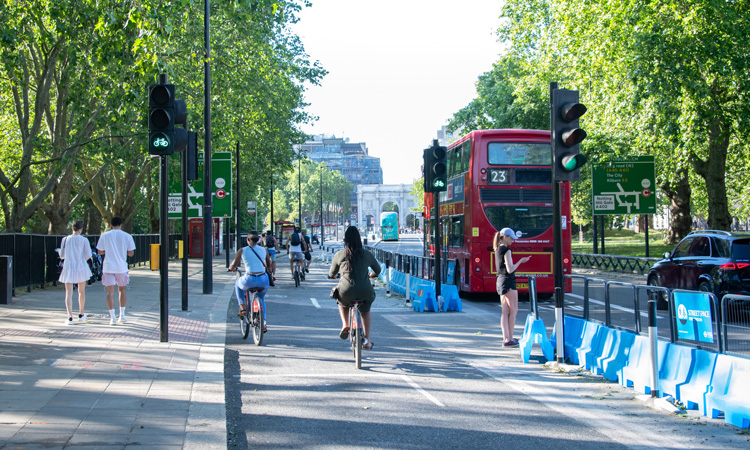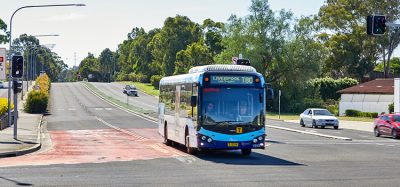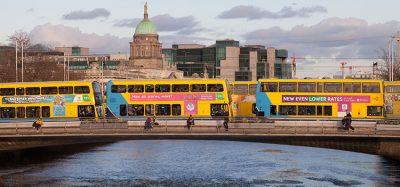Walking and cycling up in London according to new TfL data
- Like
- Digg
- Del
- Tumblr
- VKontakte
- Buffer
- Love This
- Odnoklassniki
- Meneame
- Blogger
- Amazon
- Yahoo Mail
- Gmail
- AOL
- Newsvine
- HackerNews
- Evernote
- MySpace
- Mail.ru
- Viadeo
- Line
- Comments
- Yummly
- SMS
- Viber
- Telegram
- Subscribe
- Skype
- Facebook Messenger
- Kakao
- LiveJournal
- Yammer
- Edgar
- Fintel
- Mix
- Instapaper
- Copy Link
Posted: 14 December 2020 | Intelligent Transport | No comments yet
TfL says it is committing even more money to improving walking and cycling in the capital over the next few months.


Transport for London (TfL) has published new data that shows that walking and cycling in the UK capital has significantly increased since the coronavirus pandemic began, as Londoners’ travel habits rapidly changed in the months following the start of the first national lockdown in March 2020.
Following the Government’s advice in March for people to stay at home and stop non-essential social contact, Londoners were advised by the Government not to use public transport unless making an essential journey and to walk or cycle wherever possible. To support this, TfL worked to deliver the Mayor’s bold Streetspace programme of temporary changes to roads across London, creating a network of strategic cycle routes, extra space for walking in town centres as well as quieter roads in local neighbourhoods.
Changes to habits saw the proportion of journeys made by walking and cycling increase significantly, from 29 per cent between January and March 2020 to an estimated 46 per cent between April and June 2020.
Walking and cycling has remained well above previous levels even as restrictions have eased and people began to return to public transport, with it accounting for an estimated 37 per cent of all journeys between July and September. Walking accounts for a sizeable part of this, which TfL says is good as it is the cheapest and most accessible way for people to incorporate physical activity into their daily lives.
The huge increase in modal share for walking and cycling is outlined in TfL’s latest Travel in London report, which has been published today. Normally, the annual report outlines changes in travel habits for the full previous calendar year, in this case 2019. This year, as a result of the dramatic changes to travel due to the coronavirus pandemic, a new section has been added to the report outlining the changes that have taken place since March this year.
Will Norman, London’s Walking and Cycling Commissioner, said: “This new data fully encapsulates how the pandemic has transformed the way Londoners travel around our city. Many people enjoyed making the most of the quieter streets during lockdown and this change in habit has had lasting effects, with walking and cycling journeys continuing to be higher year-on-year.
“Our world-leading Streetspace programme is helping support this shift by enabling more people to safely walk and cycle across the capital. Without the measures we have rapidly rolled out, the worrying increase in private transport, such as cars, may have been even higher which would be extremely damaging for our city.
“The second phase of our Streetspace programme will enable us to build even further on the increasing number of Londoners walking and cycling and help ensure a cleaner, greener recovery from the pandemic.”
“We have worked very hard this year to ensure that Londoners can move around the capital safely during the coronavirus pandemic and this new data shows just how important walking and cycling have been in helping Londoners stay healthy and safe,” said Helen Cansick, Head of Streetspace delivery at TfL.
“That’s why it’s crucial that we continue to invest in our Streetspace programme to support walking and cycling, ensuring that the capital can recover from the pandemic as a healthier and more sustainable place for everyone.”
Following the recent funding deal agreed with Government, TfL says it has committed to setting aside at least £75m on walking and cycling schemes across the capital over the next six months, with a further £20m from the Department for Transport’s Active Travel Fund set to be invested with the boroughs through TfL.
Related topics
COVID-19, Infrastructure & Urban Planning, Passenger Experience, Sustainable Urban Transport
Related modes
Bikes & Scooters, Walking
Related cities
London
Related organisations
Transport for London (TfL)
Related people
Helen Cansick, Sadiq Khan, Will Norman







